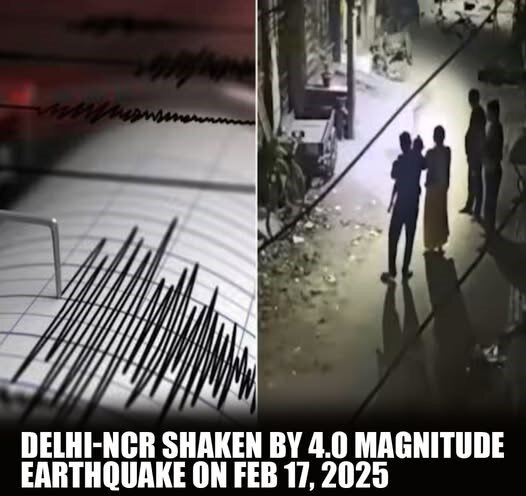New Delhi earthquake: seismicity increasing with land subsidence

In the early hours of 17 February 2025, an earthquake with a magnitude 4 occurred near Jail Park in Dhola Kawan, New Delhi, at a depth of 5 km, which was strongly felt throughout the Indian National Capital Region.
The seismicity of the New Delhi region has shown remarkable characteristics over the past 30 years. Out of 26 earthquakes with a magnitude of more than 4 in the area around New Delhi in the past 20 years, 24 events are related to the last 12 years and after 2012.
This seismicity shows a focus on the western side of Delhi in the vicinity of the extensive groundwater abstraction area.
This area is in the moderate to high earthquake hazard category in the seismic zoning map of India New Delhi.
Historically, New Delhi has experienced several major earthquakes. For example, notable earthquakes include the 1720 magnitude 6.5 earthquake and the 1956 magnitude 6.7 Bulandshahr earthquake. In the past 30 years, especially from the mid-1990s to 2025, minor to moderate earthquakes have affected New Delhi.
The Uttarakhand earthquake (1991) of magnitude 6.8 affected northern India. The 1999 Chamoli earthquake (6.6) also had repercussions in New Delhi.
The 2015 Gorkha-Nepal earthquake (7.8) caused tremors in northern India, including New Delhi. Thus, in recent decades, these events indicate that New Delhi itself has not experienced major earthquakes directly, but has been shaken and vulnerable to tremors from nearby areas such as the Himalayas.
Over-extraction of groundwater in Delhi has led to significant land subsidence. Radar sensors have shown that Delhi has been undergoing an average deformation of 15 mm per year.
Groundwater level data also show a subsidence of 20 cm in some areas over the past two decades. The subsidence rate of 11–17 cm per year near Indira Gandhi International Airport is linked to the compaction of aquifers as the groundwater table drops.
This subsidence alters the distribution of subsurface stress and potentially destabilizes fault systems.
Excessive pumping reduces the negative pressure in aquifers, causing clay layers to compress and the ground to sink. Land subsidence in the New Delhi region has been a growing concern over the past three decades, influenced by various human and natural factors. The rate of land subsidence is mainly influenced by groundwater extraction, urbanization, and geological conditions.
Historically, New Delhi has experienced significant land subsidence due to rapid urban development and increasing demand for water resources. Groundwater extraction has been a major contributor to this phenomenon.
Studies conducted in the early 1990s showed that the city was experiencing subsidence rates of 1 to 2 cm per year in certain areas. In recent years, satellite-based remote sensing technologies, such as Interferometric Synthetic Aperture Radar (InSAR), have provided more accurate measurements of land subsidence in urban areas, including New Delhi.
Research published around 2020 showed that certain parts of New Delhi are experiencing higher rates of subsidence, with some areas showing rates of more than 5 cm per year to about 20 cm per year.
As of February 2025, studies show that while some areas continue to experience significant ground subsidence, ongoing research using advanced technologies suggests that ground subsidence remains a critical issue for urban planning and sustainability in New Delhi.
While subsidence itself does not directly cause earthquakes, it can modulate stress on pre-existing faults. For example, the Delhi ridge and the Aravalli fault system are currently seismically active, and stress changes due to subsidence may affect fault stability. Rapid urbanization in Delhi has introduced non-tectonic horizontal compression due to the cumulative weight of buildings and infrastructures. Groundwater dynamics can stabilize or destabilize faults.
In areas with heavy groundwater withdrawal (such as Kapashera), stress due to subsidence can dominate, and seismic vulnerability also increases.
Delhi's location in seismic zone IV (moderate to high risk) and its soft alluvial soil amplify seismic waves, making even moderate tremors (e.g. the 2025 Dhowla Kwan earthquake of magnitude 4) more strongly felt.
The shallow depth of the 2025 earthquake (5 km) amplified its impact around the epicenter, as the seismic waves dissipated less energy before reaching the surface. Areas like Kapashera, which are currently subsiding due to the loss of groundwater, are located near a fault zone.
Changes in stress in this area can reactivate dormant faults. More than 80% of buildings in Delhi are not earthquake-resistant, increasing the risk of collapse during shaking.
Leave a Comment